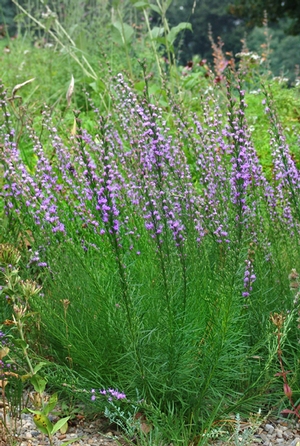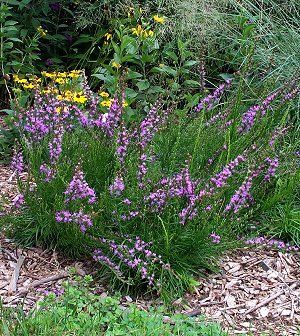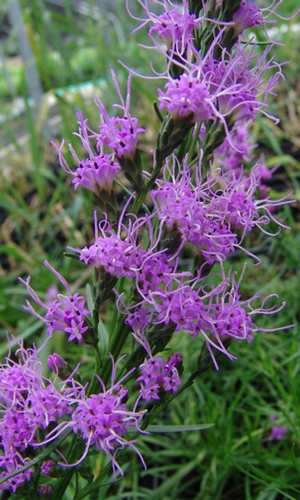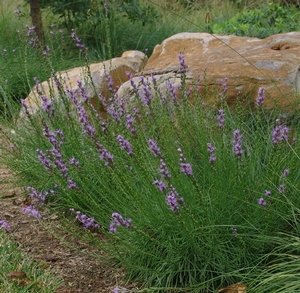Liatris microcephala
Common: smallhead blazing starLiatris microcephala - 72 per flat
- Height: 18"-24"
- Spread: 12"-18"
- Spacing: 12"
- Hardiness Zone(s): 4-7


Liatris microcephala - 72 per flat



An exceptional, compact native with fine-textured, deep green grassy leaves. Smallhead blazing star sends up numerous spikes with tassel-like rosy purple flowers in August and September. Unique to the genus, the flowers open from top to bottom on the spike in a slow unfurling of brilliant color. Excellent as a cut flower. Tolerant of clay and drought, very low maintenance. Loved by butterflies! Liatris microcephala can be found in sandy, dry prairies and open glades of the Southern Appalachian Mountains.
Prefers average to dry, well-drained, slightly acidic soil in full sun. Tolerant of harsh growing conditions such as poor soil, heat, humidity and drought. Best used in rock gardens, perennial and cutting gardens or naturalized areas.
Defying summer extremes of heat, humidity and drought, Liatris microcephala is an easy care herbaceous perennial that thrives in full sun and poor soil. Growing from a woody corm, it produces a tuft of fine textured, grass-like foliage in spring. Then in late summer multiple 2-2½’ erect leafy stems, encircled by numerous ¾” rose-purple flowers, grace its tufted mound. Plants require lean, well drained soil, especially in winter. Small-headed gayfeather makes a vibrant vertical accent in a sunny border combined with Coreopsis delphiniifolia or Rudbeckia fulgida. Its diminutive size makes it ideal in the rock garden nestled with Silene regia, Krigia montana, Bigelowia nuttallii and Ruellia humilis. - Mt. Cuba Center
Proven hardy greenroof plants are the Alpine types and those that can retain a certain amount of moisture within their leaves or bulbs. So, in theory, other plants known to flourish in areas of high heat, drought, wind, direct sun, and temperature extremes should be particularly adaptable to the sometimes harsh conditions of a greenroof. I would speculate that most plants naturally occurring along county roads, expressways, abandoned sites and the like that do not receive irrigation would adapt well to the greenroof environment... Gayfeather is native to the U. S. Granite Outcrops. - GreenRoofs.com